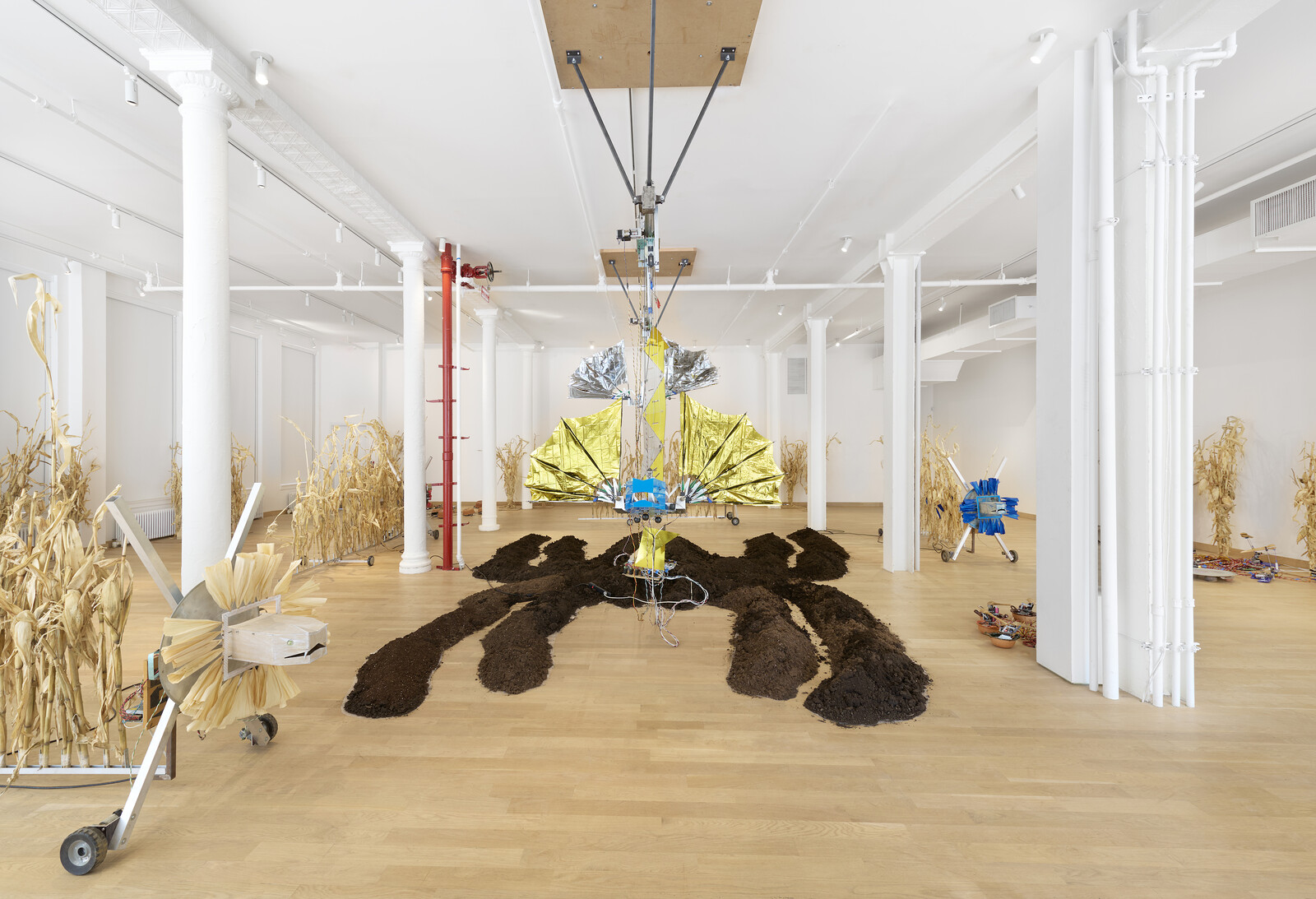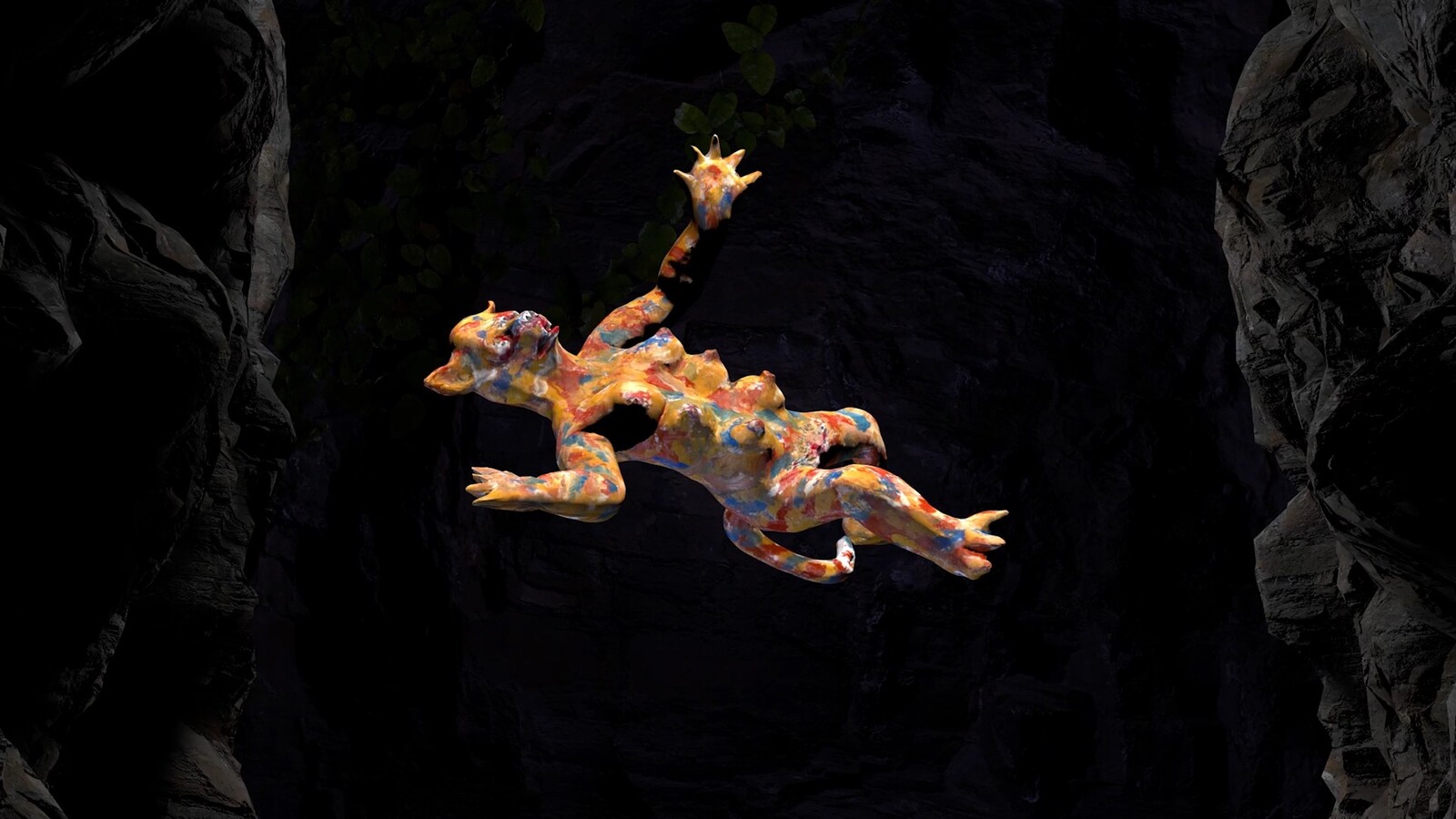Categories
Subjects
Authors
Artists
Venues
Locations
Calendar
Filter
Done
June 12, 2024 – Review
Fernando Palma Rodríguez’s “Āmantēcayōtl”
Xenia Benivolski

When I first visited the wall between Mexico and the US in Patagonia, Arizona, in 2017, the town was celebrating: the redevelopment of a large patch of agricultural land had been halted due to the discovery of traces left by a jaguar. In one dramatic appearance, the endangered animal had accomplished what land activists had been trying to do for years. In this same spirit, Fernando Palma Rodríguez’s work plays on the symbiotic relationship between nature and technology, hinting at the possibility of alliance between animals, machines, and humans in the interest of anti-capitalist resistance. Rodríguez is an artist trained as a mechanical engineer whose 1994 robotic installation, Greetings, Zapata Moles—sewing machines adorned with traditional Mexican wrestling masks—responded to the industrialization of his hometown. Rodríguez’s latest robotic work likewise anthropomorphizes technological objects while extending the definition of technology to include unspoken, embodied forms of knowledge that sustain the living practices of Mesoamerican cultures, with particular reference to the Nahua cosmology.
At Canal Projects, Rodríguez draws parallels between the energetic currents that power physical, electronic, and metaphysical grids, and the cosmogenic principles that tie humans to the earth. “Āmantēcayōtl: And When it Disappears, it is Said, the Moon has Died” tells …
October 27, 2023 – Review
Candice Lin’s “Lithium Sex Demons in the Factory”
Jonathan Griffin

The story, as literary theorist Peter Brooks has observed, is today’s dominant cultural form. To Brooks, this “overabundance” of narrative is worrying: he criticizes the deference of virtually all strands of culture (not only literature, TV, and movies but art, museology, and—especially—news media) to the persuasive rhetorical power of the story. I share many of his concerns. “The universe is not our stories about the universe,” he writes, “even if those stories are all we have.”
In the artwork of Candice Lin, however—an artist who nests stories inside stories, who researches, remembers, speculates, and concocts in equal measure, all at once, without hope or intent to persuade—the story becomes a lubricative medium that enables the destabilizing of sense, the de-centering of singular subjectivities, and the unpicking of neatly tied conclusions.
“Lithium Sex Demons in the Factory,” the Los Angeles-based artist’s multimedia exhibition at the non-profit Canal Projects in New York, is near-impossible to summarize, except by telling stories. Let me start with one. In the 1970s, female workers at Japanese-operated factories in rural Malaysia experienced demonic possessions and spirit attacks. Workers at these factories hailed not just from Malaysia but China and India too, so bomohs (Malay shamans) and healers …